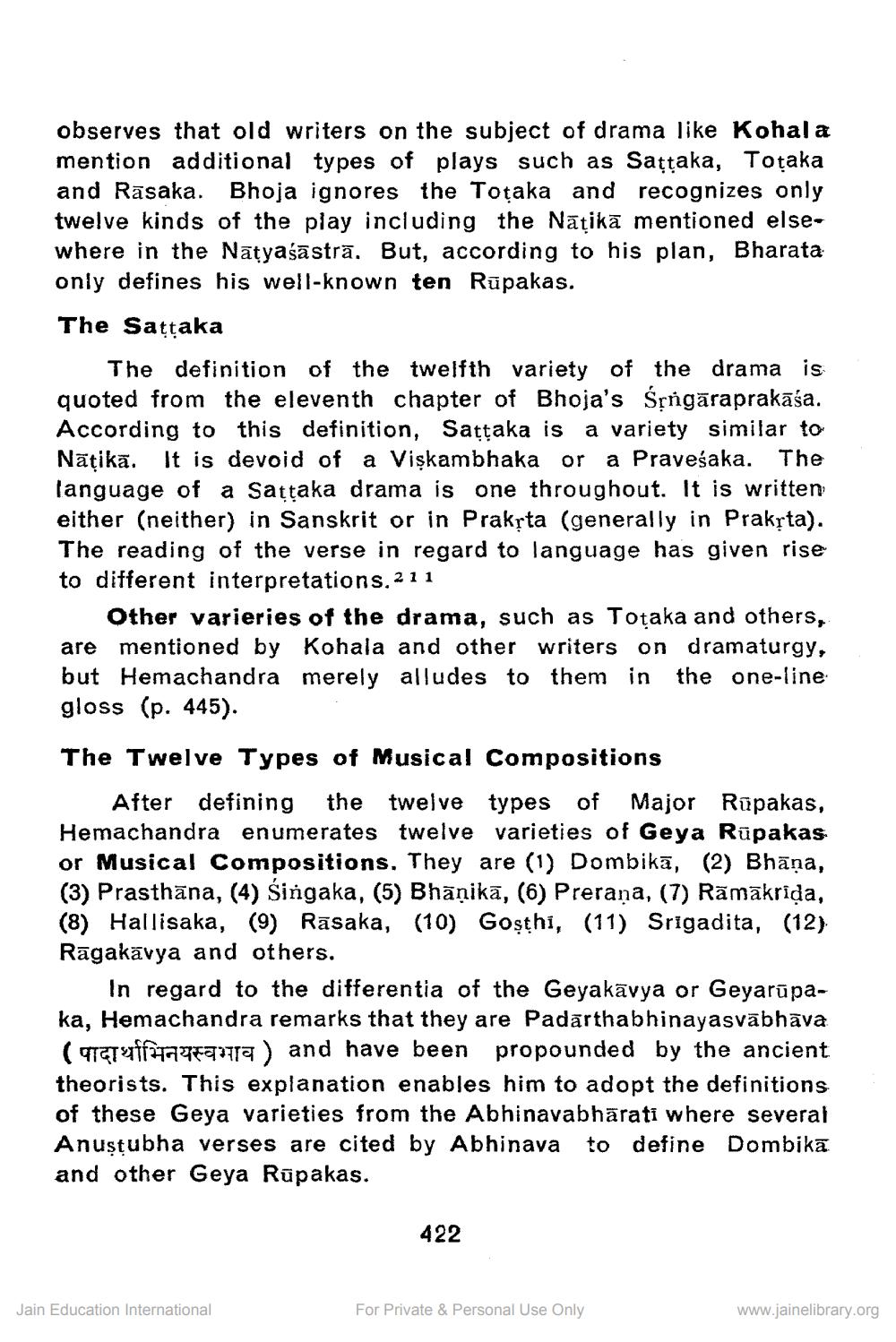________________
observes that old writers on the subject of drama like Kohala mention additional types of plays such as Saṭṭaka, Toṭaka and Rāsaka. Bhoja ignores the Totaka and recognizes only twelve kinds of the play including the Nātikā mentioned elsewhere in the Natyaśāstrā. But, according to his plan, Bharata only defines his well-known ten Rūpakas.
The Saṭṭaka
The definition of the twelfth variety of the drama is quoted from the eleventh chapter of Bhoja's Śṛngāraprakāśa. According to this definition, Saṭṭaka is a variety similar to Nātikā. It is devoid of a Viskambhaka or a Praveśaka. The language of a Saṭṭaka drama is one throughout. It is written either (neither) in Sanskrit or in Prakṛta (generally in Prakṛta). The reading of the verse in regard to language has given rise to different interpretations. 211
Other varieries of the drama, such as Toṭaka and others, are mentioned by Kohala and other writers on dramaturgy, but Hemachandra merely alludes to them in the one-line gloss (p. 445).
The Twelve Types of Musical Compositions
After defining the twelve types of Major Rūpakas, Hemachandra enumerates twelve varieties of Geya Rūpakas or Musical Compositions. They are (1) Dombika, (2) Bhāṇa, (3) Prasthāna, (4) Śingaka, (5) Bhāṇikā, (6) Preraṇa, (7) Rāmākrīḍa, (8) Hallisaka, (9) Rāsaka, (10) Gosthi, (11) Srigadita, (12) Ragakāvya and others.
In regard to the differentia of the Geyakavya or Geyarūpaka, Hemachandra remarks that they are Padarthabhinayasvābhāva (पादार्थाभिनयस्वभाव ) and have been propounded by the ancient theorists. This explanation enables him to adopt the definitions of these Geya varieties from the Abhinavabhārati where several Anustubha verses are cited by Abhinava to define Dombika and other Geya Rūpakas.
Jain Education International
422
For Private & Personal Use Only
www.jainelibrary.org




